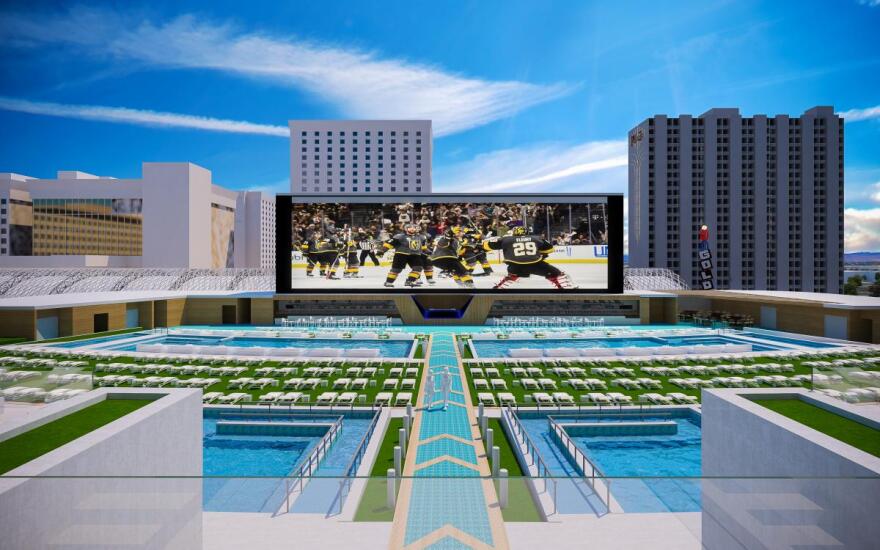Downtown Las Vegas is a place many still forsake. Too dangerous. Or dirty. Or old.
But downtown isn't the same as it was 10 years ago.
A little more than a decade ago, East Fremont Street was a dark shadow of what it is today.
As mayor, Oscar Goodman pushed for change as the consummate downtown cheerleader. Redevelopment money paid for new sidewalks and streets; it helped businesses pay for neon signs.
The Great Recession gutted all kinds of plans for Symphony Park and as all of Nevada suffered, so did downtown Las Vegas.
Then, Tony Hsieh moved his Zappos headquarters downtown. Invested $350 million--many believe it's now up to around $400 million -- into downtown property and new businesses.
And Derek Stevens turned the downtrodden Fitzgerald into the D. He bought other properties. Bought the old courthouse, razed it and turned it into an outdoor festival area.
Now he's doing well enough that he plans to construct a new resort, the first in decades for Fremont Street. It's called Circa and it is slated to open in 2020.
The new resort will include 777 rooms, a super-sized sports book and a rooftop pool area, which Stevens says will not only be the best pool environment in Las Vega but the best pool environment in the country.
The casino owner believes attractions are what brings visitors downtown.
"The key thing for me with Circa is we're really trying to create a lot of attractions," he said, "That's one thing about downtown but its all of Las Vegas, we're going to create some great attractions that are going to make people come to our great city."
When then-mayor Oscar Goodman started pushing for private-public partnerships to revitalize downtown, there was pushback from many people who didn't want government funds spent on the Smith Center for the Performing Arts or the Mob Museum.
"They complained about everything I did," the former mayor said.
Goodman told KNPR's State of Nevada he was "vilified" for pushing for the Mob Museum, but the museum has paid back all the public money that was used to create it and it is now the second most popular attraction downtown.
The former mayor said there is a lesson to be learned from the Mob Museum and other publicly funded projects.
"You can't do anything yourself," Goodman said, "You have to have a vision. You have to believe in your vision. Then you have to go out and partner with the private sector."
Goodman said the city doesn't give out handouts instead it partners with developers who have the money and are going to take an empty lot or an abandoned building and turn it into something.
While the Mob Museum does bring visitors to downtown, the main attraction is still the Fremont Street Experience canopy.
Patrick Hughes is the executive director of the Fremont Street Experience. He said the canopy is undergoing an upgrade.
"We're about to embark on a $32 million upgrade of the largest LED screen in the world," Hughes said.
He said the improvements will further drive and support development downtown. Hughes pointed to a new tower at the Fremont Casino and improvements to the Downtown Grand as examples of how the area is booming.
"Downtown is on a resurgence and the anchor is the Fremont Street Experience and that's what we're about to renovate," he said.
When Hughes first moved to Las Vegas 23 years ago, the Fremont Street Experience was just a few months old but it was one of the very first steps towards bringing back an area of the city that had fallen into disrepair.
After dropping off his bags at a nearby hotel, he walked to the canopy.
"Little did I know that 20 years later, I would still be living here and now running the most popular tourist destination in the city of Las Vegas. This is the American Dream that I'm living."
Derek Stevens, casino owner; Oscar Goodman, former Las Vegas mayor; Patrick Hughes, executive director, Fremont Street Experience














